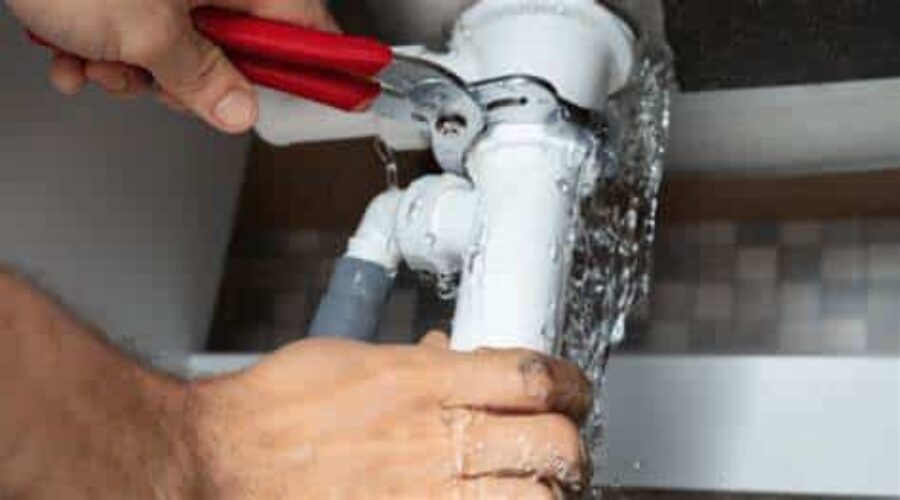
5 Essential Tips for Detecting Balcony Leaks In San Diego
Did you know that water leaks in balconies can lead to significant structural damage if left unnoticed? Detecting leaks early is crucial to prevent costly repairs down the line. In this post, we will share five essential tips to help you identify and address balcony leaks promptly. By implementing these strategies, you can safeguard your property from water damage and ensure the longevity of your balcony. Stay tuned to learn how to spot leaks before they escalate into a major issue.
Recognizing Leak Signs
- Water Marks
Water marks on the ceiling or walls are clear indicators of a leak in your balcony. These marks often appear as brown or yellow stains, signaling water seepage.
Pros: Easy to spot, direct evidence of water intrusion.
Cons: May not always pinpoint the exact location of the leak.
- Mold Growth
The presence of mold or mildew is a strong sign of excessive moisture and potential leaks. Mold thrives in damp environments, indicating a leak issue.
Mold indicates prolonged moisture exposure.
Mold can cause health issues if left unaddressed.
- Paint Peeling
Peeling paint on your balcony walls or ceiling can be caused by water damage from leaks. The bubbling or flaking paint is a visual cue of underlying leakage problems.
- Paint peeling is common in areas with consistent water exposure.
- Addressing the leak promptly can prevent further damage to the paint and structure.
- Pooling Water
Pooling water on your balcony floor after rain is an obvious sign of leaks. Standing water indicates poor drainage or cracks allowing water infiltration.
- Standing water accelerates structural damage.
- Regularly check for pooling water to prevent long-term issues.
Common Causes
- Cracked Tiles
Tiles on a balcony can crack due to wear and tear over time, allowing water to seep through. Look for visible cracks during inspections.
- Sealant Failure
When the sealant around your balcony deteriorates, it can no longer prevent water from entering. Inspect sealant regularly for signs of wear.
- Drainage Issues
Poor drainage systems can lead to water pooling on the balcony, causing leaks. Ensure proper slope towards drainage outlets to prevent standing water.
- Structural Cracks
Structural cracks in the balcony’s concrete can result from settling foundations or structural issues. These cracks can allow water infiltration.
- Check for hairline cracks during routine inspections.
- Address any structural issues promptly to prevent further damage.
5 Essential Tips for Detection
- Visual Inspection
Start by examining the balcony’s surface for cracks, discoloration, or mold growth as these can indicate potential leaks. Look for water stains on the ceiling below the balcony as well.
- Water Hose Test
Conduct a water hose test by spraying water on different parts of the balcony to simulate rainfall. Check for any signs of water seepage or leakage around the edges and corners.
- Dye Test
Perform a dye test by adding coloring to water and pouring it over suspected leak areas. This method helps trace the path of water infiltration, highlighting hidden leaks effectively.
- Professional Assessment
Consider seeking a professional assessment if you are unable to detect leaks on your own. Experienced contractors have specialized tools and knowledge to identify hidden leaks accurately.
- Moisture Meter Use
Utilize a moisture meter to measure humidity levels in various areas of the balcony. Elevated moisture readings can pinpoint potential leak sources, guiding targeted repair efforts.
Fixing Leaks Effectively
- Sealant Replacement
To address leaks in your balcony effectively, consider replacing the sealant around windows and doors. This simple task can prevent water seepage.
- Grouting and Tiling
Inspect the grouting and tiling on your balcony floor regularly. Cracked tiles or missing grout can lead to leaks.
- Pros: Prevents water damage.
- Cons: Requires regular maintenance.
- Drainage Correction
Ensure proper drainage on your balcony by clearing any clogged drains or gutters. Poor drainage can cause leaks and water accumulation.
- Key Information: Regularly clean debris from drains.
- Waterproofing Application
Consider applying a waterproofing membrane to your balcony surface. This protective layer prevents water penetration, reducing the risk of leaks.
- Steps:
- Clean the surface thoroughly.
- Apply the waterproofing product evenly.
- Allow it to dry completely before use.
Preventing Future Leaks
- Regular Maintenance
Regularly inspect balcony surfaces for any signs of wear, cracks, or discoloration to detect leaks early. Clean gutters and drains to prevent blockages that can lead to water accumulation and leaks.
- Quality Materials Use
Ensure high-quality waterproofing materials are used during construction or repairs to prevent leaks. Opt for durable sealants and membranes that offer long-lasting protection against water infiltration.
- Proper Installation Practices
Hire experienced professionals who follow industry standards for balcony construction and waterproofing. Properly install flashing, membranes, and sealants to create a watertight barrier against leaks.
- Routine Inspections
Schedule regular inspections by professionals to identify and address any potential issues before they escalate. Conduct thorough leak detection tests periodically to ensure the balcony remains leak-free.
FAQs
How Can I Recognize Signs Of Balcony Leaks?
To recognize signs of balcony leaks, look for water stains on the ceiling below the balcony, peeling paint or wallpaper, musty odors, dampness on walls or floors near the balcony, and mold growth.
What Are Common Causes Of Balcony Leaks?
Common causes of balcony leaks include damaged or missing grout in tiles, cracked caulking around windows or doors, improper waterproofing, deteriorated sealant around railings, and structural issues like cracks in the concrete.
What Are 5 Essential Tips For Detecting Balcony Leaks?
- Regularly inspect for water stains or discoloration.
- Check for any cracks or gaps in the balcony structure.
- Test waterproofing by pouring water on different areas.
- Look for signs of mold or mildew growth.
- Hire a professional if you suspect a leak but can’t locate it.
How Can I Effectively Fix Balcony Leaks?
To effectively fix balcony leaks, identify the source accurately first. Then repair any damaged grout, replace cracked caulking, apply a waterproof sealant to vulnerable areas, fix structural issues promptly, and consider hiring a professional if needed.
How Can I Prevent Future Balcony Leaks?
Prevent future balcony leaks by conducting regular inspections and maintenance, ensuring proper waterproofing during construction or renovation, repairing any damage promptly, keeping drains clear of debris, and addressing any signs of potential leaks immediately to avoid costly repairs later on.
Conclusion
Call 1st Response Leak Detection at (619) 374-8554 right away to set up an interactive consultation with one of our experts.
Call the experts of 1st Response Leak Detection at (619) 374-8554 to avail of our leak detection services in San Diego, CA.



